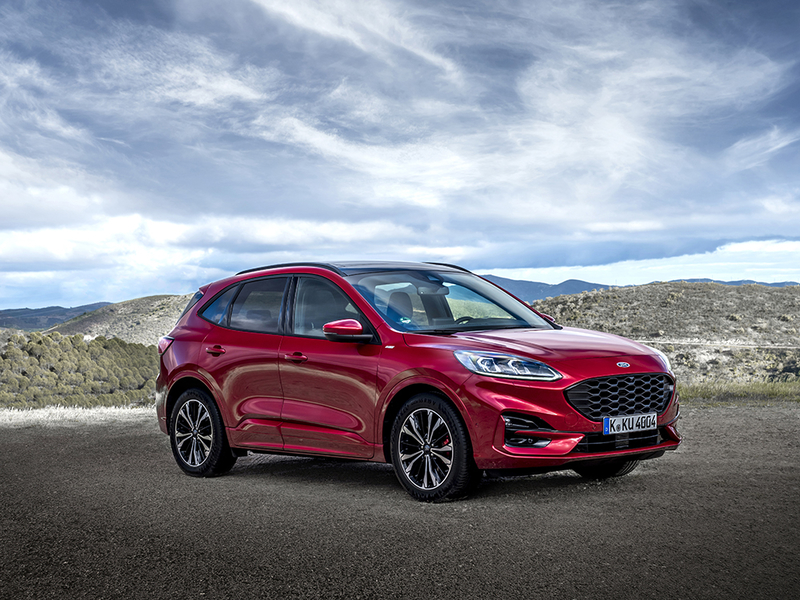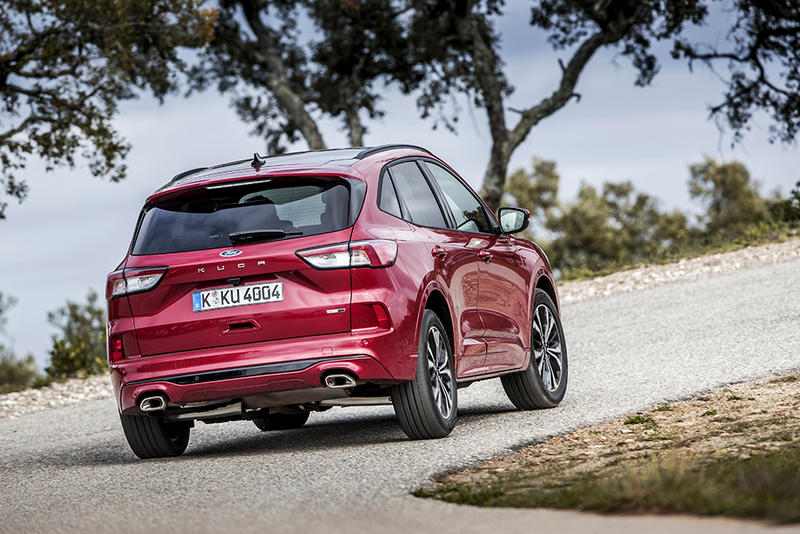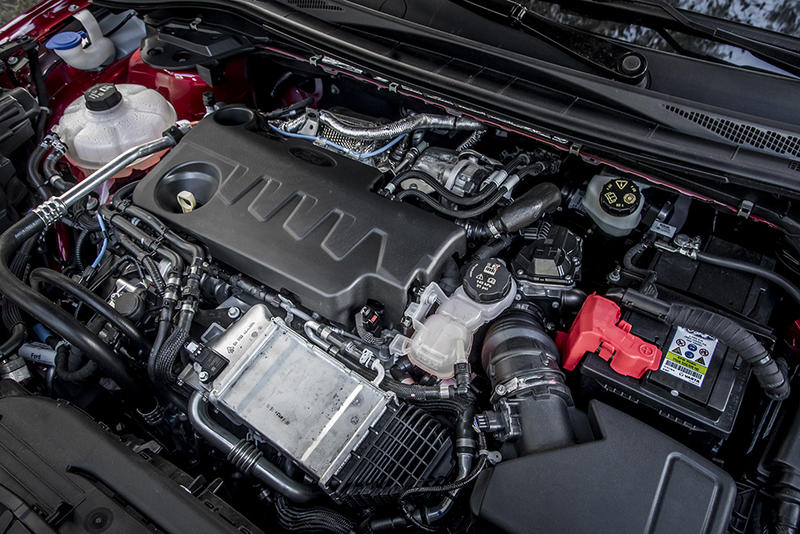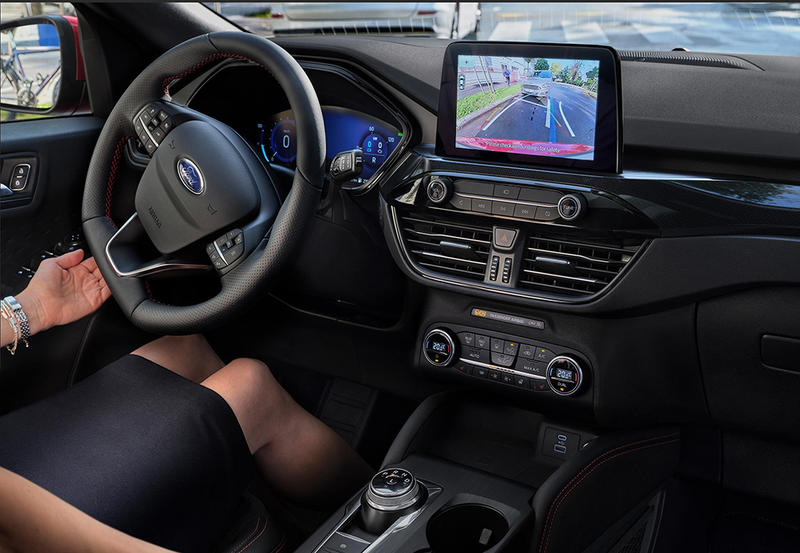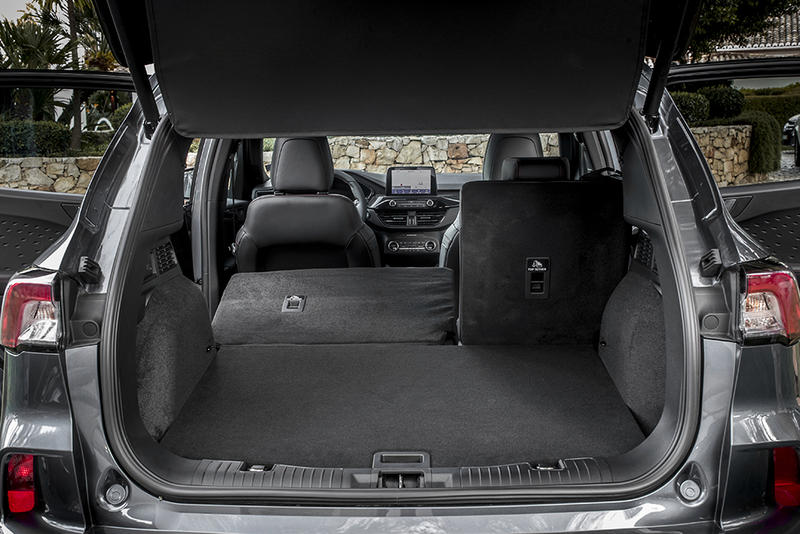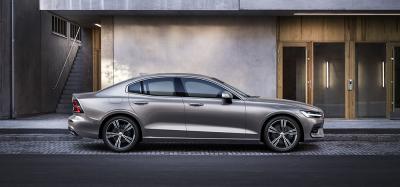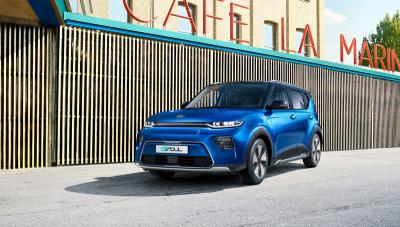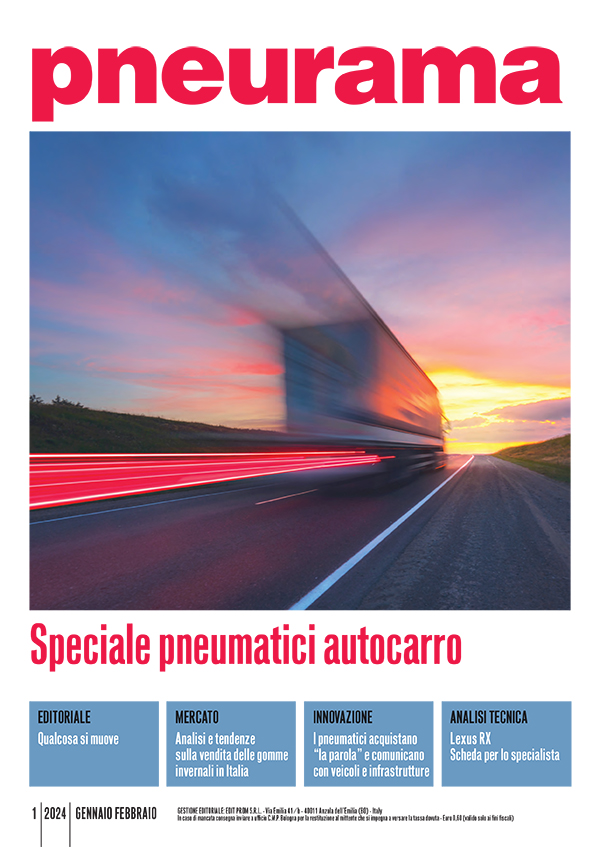With sales totalling over one million since 2008, the year of its first appearance on the European market, the Kuga quickly established itself as one of the most successful models in the Blue Oval range, behind Ford’s Fiesta and Focus, and by far the most popular sport utility vehicle among Ford customers. The third edition of the Kuga has not been subjected to a simple restyling (as with the 2012 update), but a complete makeover that has affected the entire vehicle, including the chassis and a wide range of engines with no lack of hybrid solutions.
Different styles for different temperaments
Longer, wider, lower, lighter and with an increased wheelbase: the third generation of this compact sport utility sees the debut a completely renewed platform, the global C2 that represents the current basic recipe for Ford’s mid-sized vehicles, such as the Focus, for example, which shares several elements with the new compact Suv.
With a maximum length of 4.63 m., 2.17 m. wide at the mirrors and 1.68 m high (1.66 in the case of the sportier ST-Line), the Kuga’s greater size and extended wheelbase (now 2,17 m.) makes the new compact SUV roomier without neglecting driving precision and stability at high speeds. The new design introduces modern styling elements, such as the honeycomb grille, large air intakes at the end of the front bumper, a sloping roof with a generous rear spoiler and LED light, while at the front, variable beam headlights guarantee adequate visibility.
Titanium, Vignale and ST-Line, are the Kuga’s three versions. The dynamic Titanium boasts dedicated aluminium finishes and interiors dominated by modern colours; Vignale on the other hand, is characterized by style and elegance, with refined interiors, featuring personalised leather upholstery; the ST-Line is definitely the sportier option, with aluminium pedals, red stitches all over the leather seats and a diffuser under the rear bumper. All three of them benefit by a full set of sensors and devices which highlights the vehicle’s ambitions, with details such as a double exhaust tailpipe, roof bars in matching colours, as well as a wide range of stylish alloy wheels and tires ranging from 225/65 R17 to 245/45 R20. As expected, no shortage of digital devices here. The vehicle’s connectivity and infotainment, depend on a Sync 3 system supported by a central 8" touch-screen integrated by the FordPass Connect. A real hotspot able to connect up to 10 devices at the same time and to access online entertainment channels during a journey, as well as updating the driver on more important things such as weather and traffic conditions. Several functions can be accessed through a simple voice command. In addition, with apps such as the Vehicle Locator, the position of the car, perhaps inside a large parking lot, can be tracked from a smartphone, while the Vehicle Status informs the driver about fuel levels, while the Remote Start allows to start the engine from a distance.
The new digital 12.3" Lcd screen is the main instrument offered to the driver and comes with different levels of customized indicators, along with a dual head-up view with all the relevant data projected on the windscreen, so that the driver may never have to look down.
The design of the interior space, thanks to the increased dimensions, guarantees even more interior room, thanks also to a sliding rear seat, which offers greater comfort to passengers, or a surprisingly large baggage space, from 411 up to 1,534 litres after folding the rear seat, and accessible through a Hands-Free Tailgate sensor which automatically opens the tailgate with a simple movement of the foot under the bumper.
The present is hybrid
Three different hybrid solutions, alongside more conventional Diesel and petrol units, make up a rather large range of engines that continues in the path of electrification chosen by Ford with several new products expected to make their debut within next year.
The Kuga Mild-Hybrid represents the basis of this development and combines a 2-litre 150 hp turbodiesel EcoBlue engine with a special multifunction Bisg alternator, which recovers and stores energy when braking, recharging a 48-volt lithium-ion battery pack, which also acts as an engine (and starter) with its 11.5 kW. According to Nedc parameters, in this configuration, which provides only for a 6-speed manual transmission, the Kuga achieves a declared average consumption of 23.3 km/litre, with emissions of 111 g/km of CO2, compared to 20.8 km/litre and 127 g/km of CO2 of a similar EcoBlue version without electrical aid, but in this case equipped exclusively with an 8-speed automatic transmission.
The Plug-In Hybrid version relies on an Atkinson 2.5 litre engine combined with a 14.4 kWh electric motor. Instead of the traditional Otto cycle, the Atkinson engine has a multilink connecting rod that links the piston to the crankshaft, which extends the stroke of the piston inside the cylinder to achieve greater energy efficiency at the expense of some power. It is an ideal solution - and one that has long since been adopted like other similar solutions – to couple an ICE engine to an electric unit, to produce a total power output of 225 hp, in the specific case of the Ford Kuga, and a mileage in electric mode of 50 around kilometres. Managed by a Cvt automatic transmission, the plug-in hybrid version reaches 83.3 km/litre of average consumption, in ideal conditions, and 26 g/km of harmful CO2 emissions.
In the future, the Atkinson unit will equip a Full Hybrid variant, with self-charging function, for driving in fully electric mode and Intelligent All Wheel Drive with four-wheel drive.
If one prefers a more traditional unit than the 1.5-litre 3-cylinder EcoBoost turbocharged petrol engine, in dual 120 and 150 hp configurations, is the perfect choice. Both come with front wheel traction and 6-speed manual transmission. The EcoBlue 4-cylinder 1500 cc. turbodiesel boasts 120 hp of maximum power, and can be equipped with both a manual or an automatic 8-speed transmission, and as already seen in the 190 hp 2.0 turbodiesel with an intelligent all-wheel drive configuration.
The Adas active assistance systems here are hidden under the pseudonym Ford Co-Pilot, ready to kick in just like an active and attentive co-pilot, ensuring the safest possible driving conditions. They are countless to name. Cross Traffic Alert and Adaptive Cruise Control, with Stop&Go function, road sign recognition and Lane Centring, second-generation Active Park Assist, able to automatically park or manoeuvre the vehicle, and a vehicle distance indicator. Everything you need, in short, to regain control, and avoid the worst, in case of distractions or the driver nodding off.
